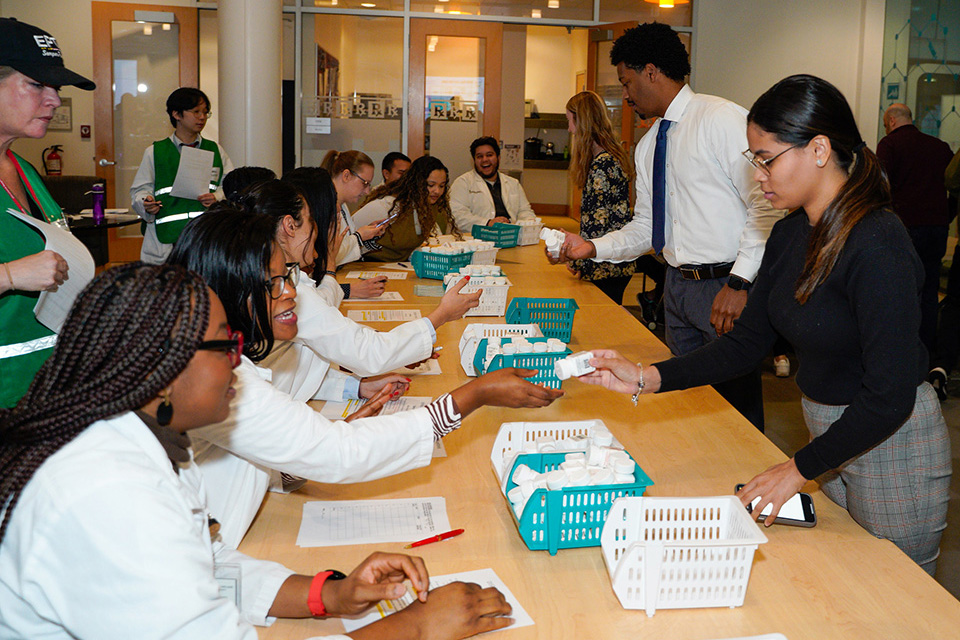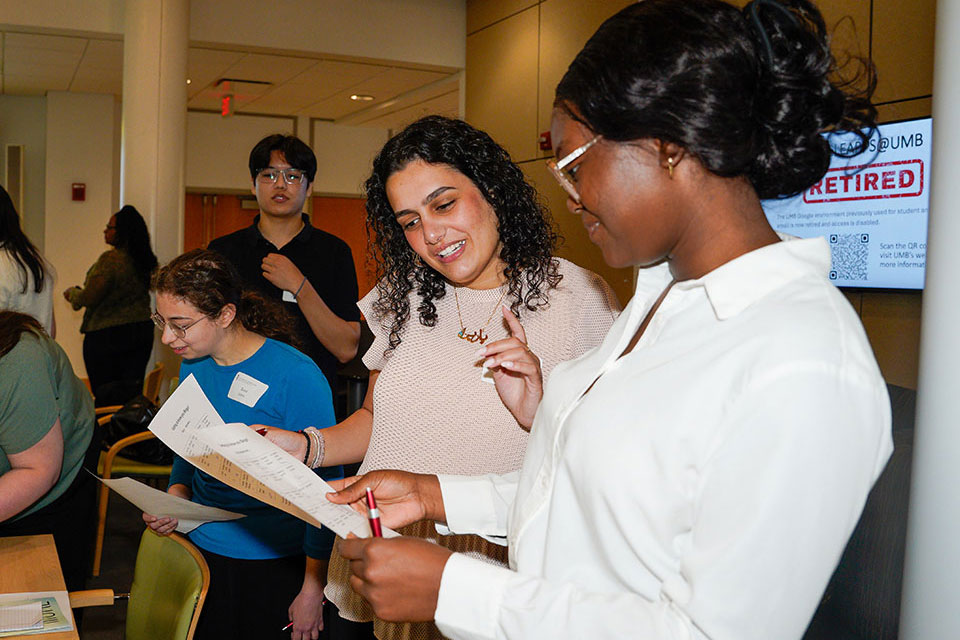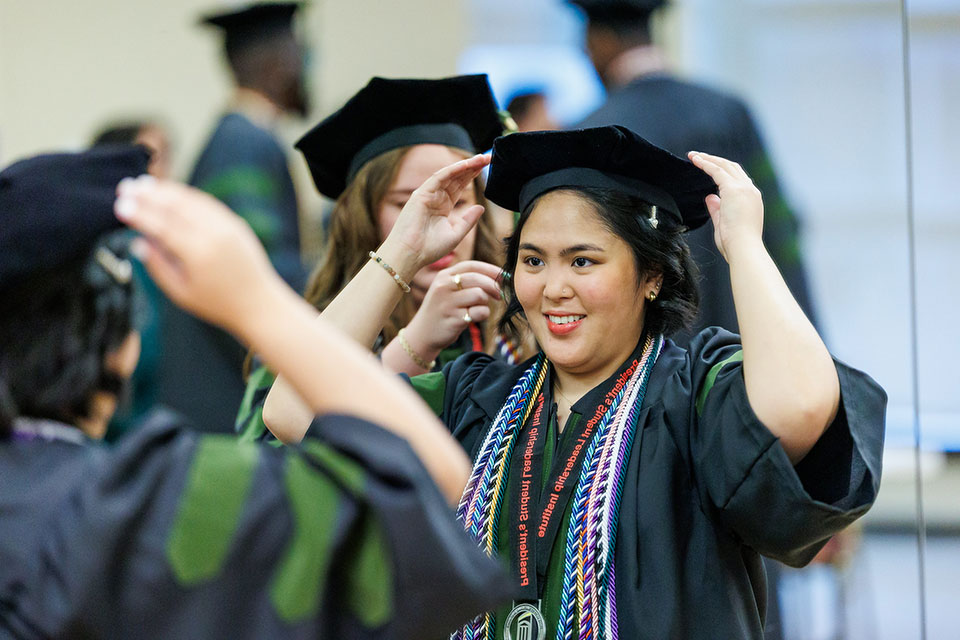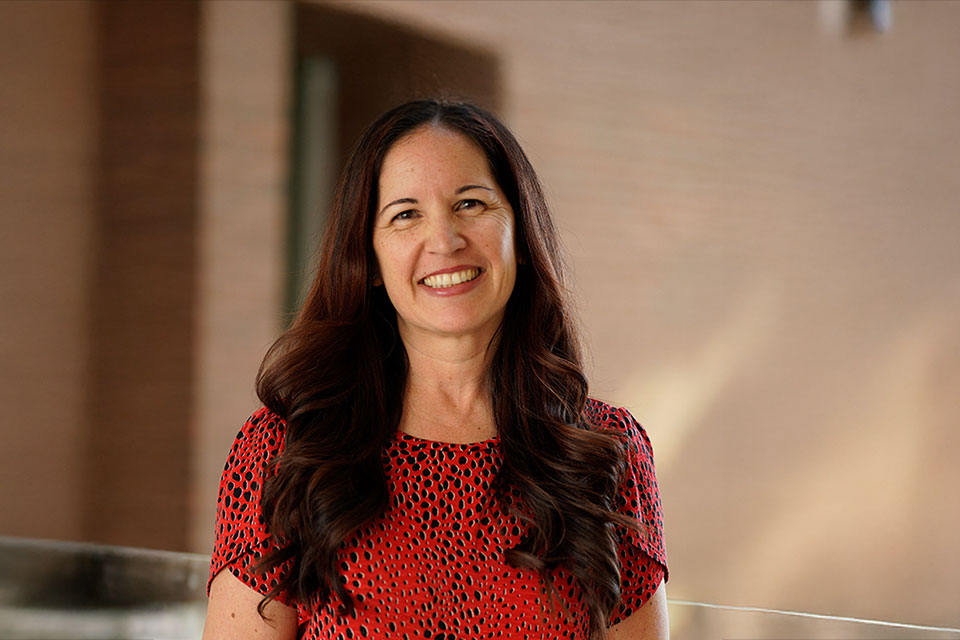PharmD Students Participate in Public Health Emergency Training
The Maryland Board of Pharmacy led student pharmacists in a point of dispensing drill.

By Andrew Tie
April 22, 2024
Third-year student pharmacists at the University of Maryland School of Pharmacy (UMSOP) participated in a public health exercise with the Maryland Board of Pharmacy’s Emergency Preparedness Task Force (EPTF) on March 6.
The event, known as a point of dispensing (POD) drill, simulated a crisis scenario of quickly distributing medication to the public following a widespread disease outbreak or release of a bioterrorism agent.
“At UMSOP, we are training our students for the health care of tomorrow,” said Amy Ives, PharmD, assistant professor of practice, sciences, and health outcomes research (P-SHOR) and one of the coordinating faculty members. “As we’ve seen with COVID-19, pharmacists play a vital role in public health emergencies, and we need to equip our students with the skills and experience to contribute in the event of an emergency.”
Wendy Camelo Castillo, MD, PhD, MSc, assistant professor of P-SHOR, was also involved in the collaboration. Students in her Public Health course received didactic information, which was then practiced in the POD.
“I’m grateful that our students were able to get this valuable experience acting out a POD, and I want to thank my faculty colleagues, the EPTF, the Baltimore City and Howard County Response Teams, and the Maryland Medical Reserve Corps for helping to make it happen,” Camelo Castillo said.
Others involved in the planning and coordination of the event include Cherokee Layson-Wolf, PharmD, BCACP, FAPhA, professor of P-SHOR, Nicole Brandt, PharmD, MBA, BCGP, FASCP, professor of P-SHOR and executive director of the Peter Lamy Center on Drug Therapy and Aging, and Jen Thomas, PharmD, chair of the EPTF.
The EPTF has trained student pharmacists across the state in POD drills over the last decade. According to Larry Hogue, BSP ’69, an EPTF member who led the event, the task force hopes to recruit student pharmacists to join the reserve corps. In the event of a real public health emergency, the student pharmacists would have already been drilled on what to do and would have the confidence to volunteer in a POD.
“We’re able to simulate all the different stations in a POD,” Hogue said. “We’re able to have students use cutting edge technology, accessing the medication screening form through a QR code on their mobile device. We hope student pharmacists, having gone through this today, would see that this is doable, there’s nothing to fear, this is well within their skillset, and they can help out.”
In the POD scenario, the public had been exposed to anthrax, and student pharmacists were set up to provide doxycycline or ciprofloxacin depending on medical history. The student pharmacists ran through the scenario as both a health care provider and a member of the public. Providers worked at different stations including greeting, registration, consulting, dispensing, and recording.
“As pharmacists, we’re the most accessible point of contact in health care,” said Sydnei Riddick, a third-year student. “We’re practicing staying prepared for any type of emergency, such as COVID or an anthrax exposure, so that we can provide health care to the community.”



